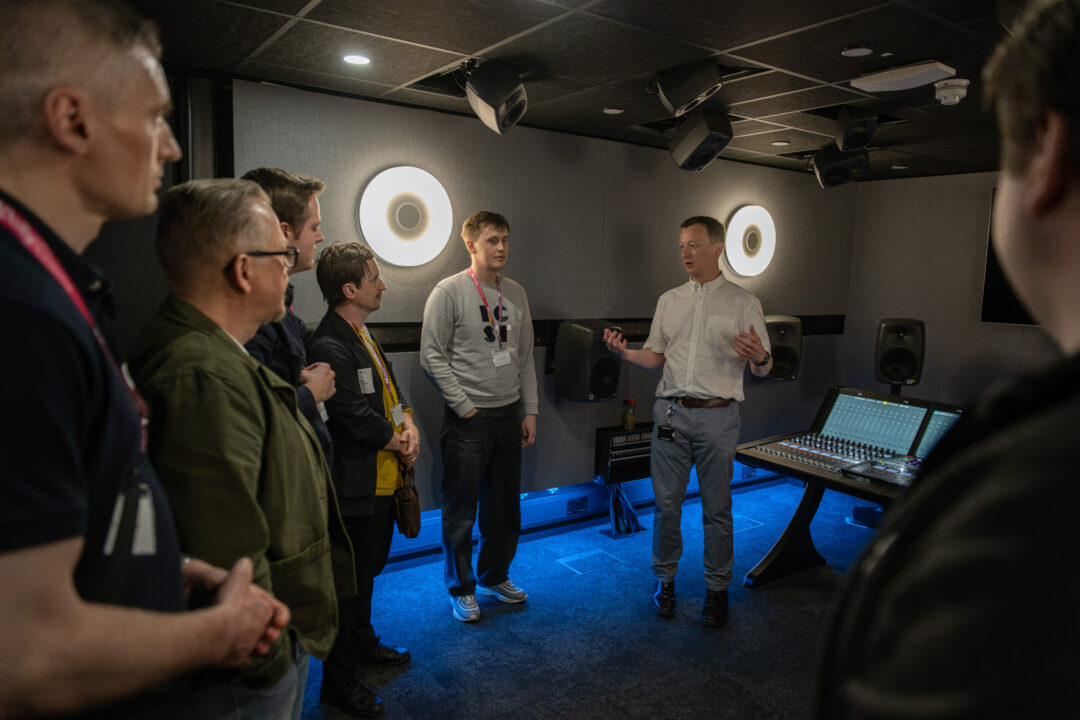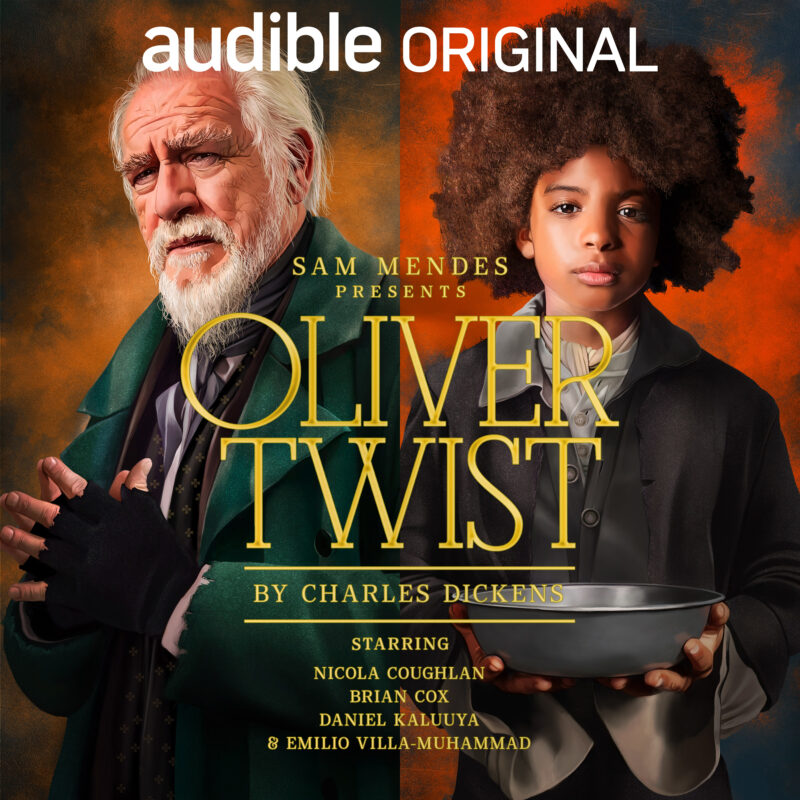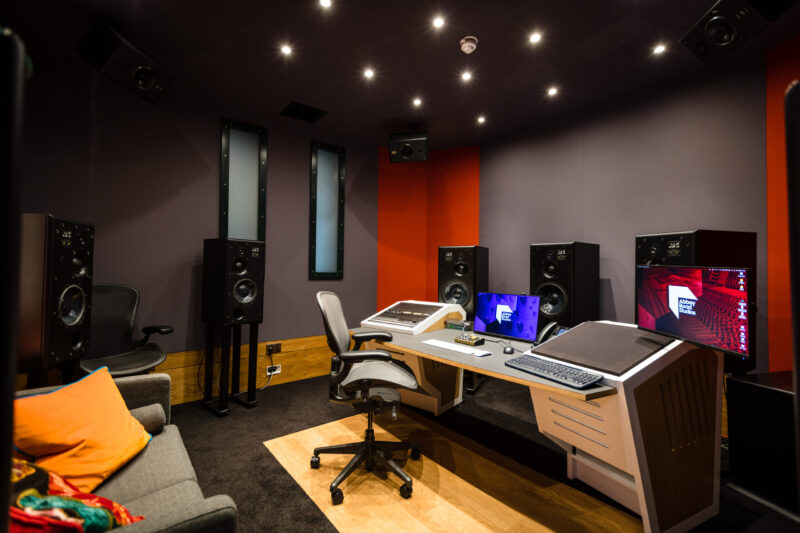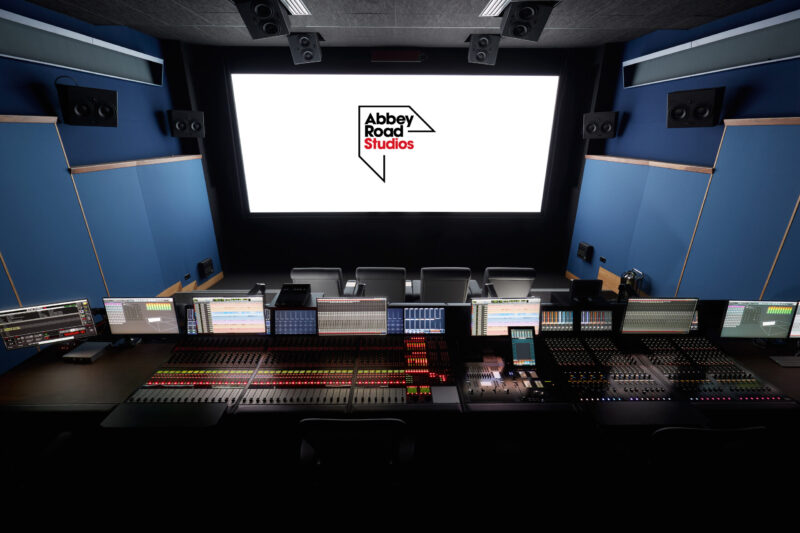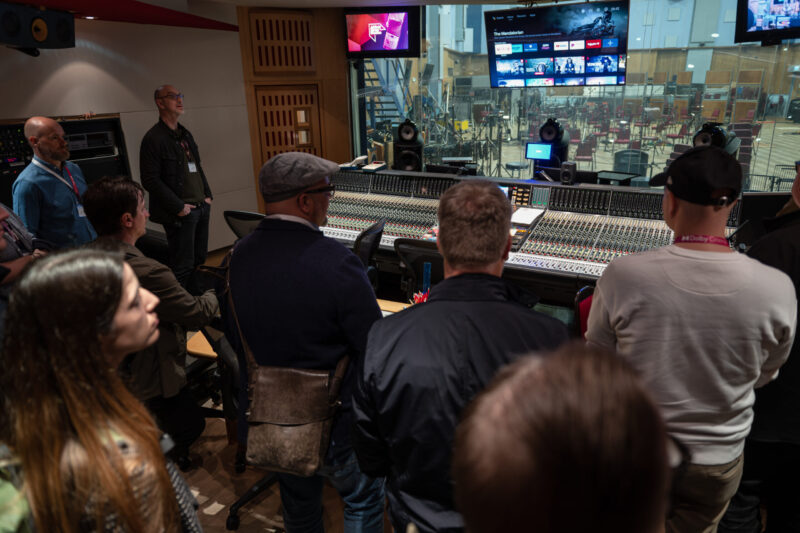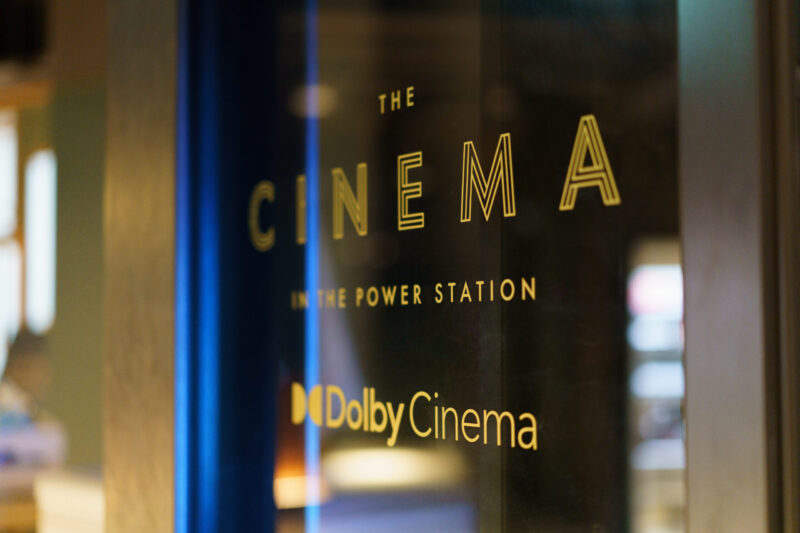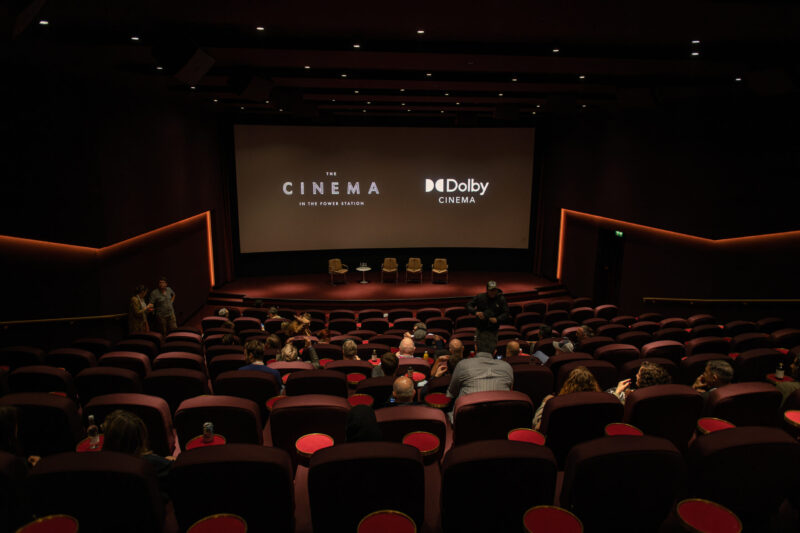London/L&B Tech Reviews: Dolby hasn’t held any dedicated events for the press since before the pandemic. So when they invited us to a listening session at their European headquarters in London, we were of course happy to oblige!
Dolby is a familiar name to anyone who reads L&B tech Reviews. Prominent audio/video formats such as Dolby Atmos and Dolby Vision have almost become part of the everyday language of hi-fi and home cinema enthusiasts.
During our stay in London, we learnt more about the developments Dolby has been working on in recent years. A lot of the technology and concepts are already familiar to those of us who work a lot with image and sound – but here we had the chance to dig deeper and talk to the people behind it!
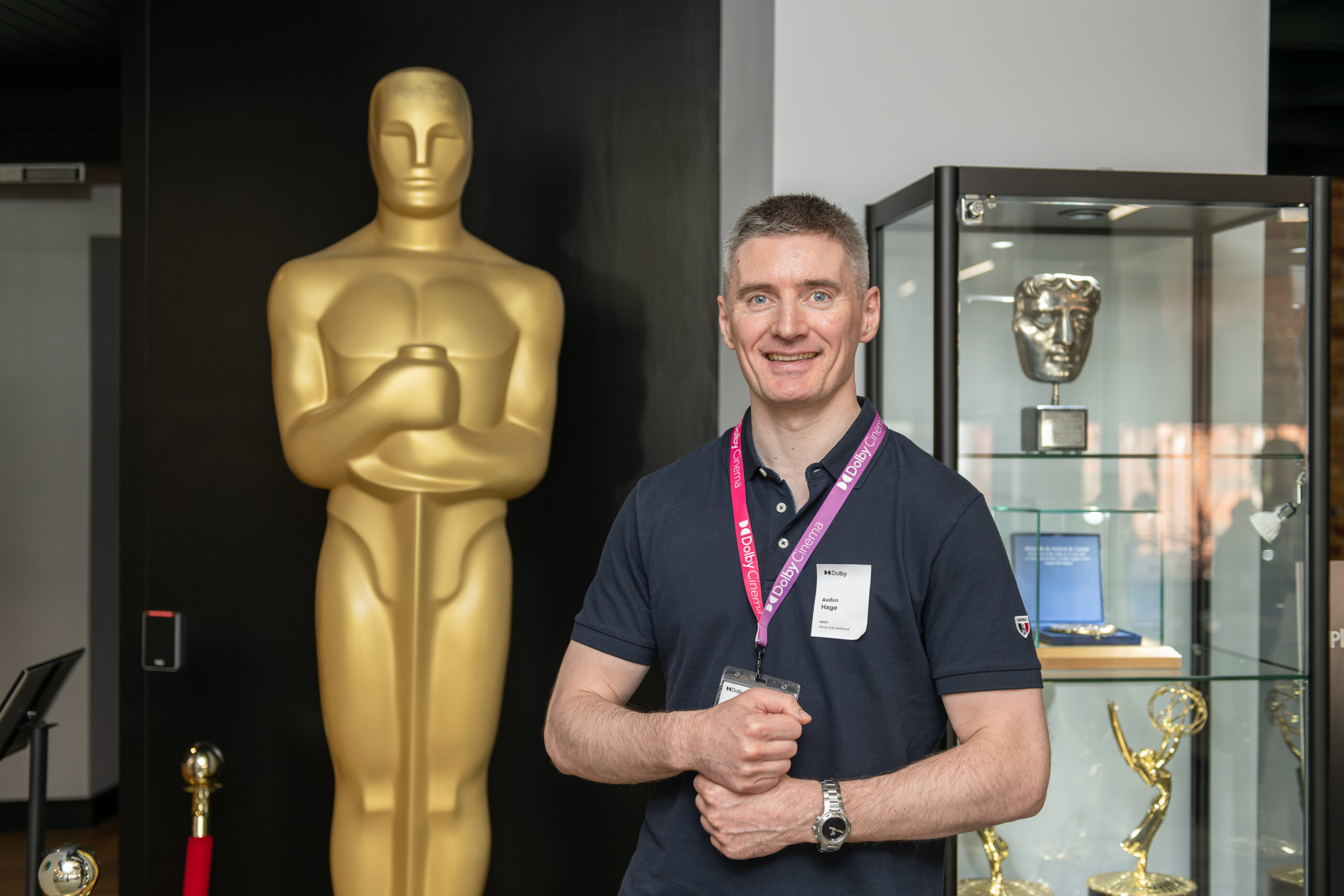
Dolby: from tape recorders to big business
These days, you can hardly avoid seeing the Dolby logo every time you turn on a streaming service or visit your local cinema. But did you know that the company’s roots go all the way back to England in the 1960s?
Ever since Englishman Ray Milton Dolby developed an ingenious way to reduce tape noise from tape recorders and cassette players (Dolby Type A and B noise reduction) and later emigrated to the US, the American company has played an important role in music, film and TV production.
Today, Dolby Laboratories is a global player deeply involved in the research and development of A/V signal processing, with patented techniques that go all the way from the studio to the consumer.
The company has also developed its own cinema standard – Dolby Cinema – which it promotes to the cinema industry around the world. It is based – unsurprisingly – on the use of Dolby Atmos-compatible speaker systems, in combination with an advanced dual projector solution that provides very high, HDR-capable contrast on large cinema screens.
In Las Vegas, you can find the Dolby Live concert venue, which has been upgraded with a giant 4K LED screen and – you guessed it – a Dolby Atmos-capable speaker system for live music.
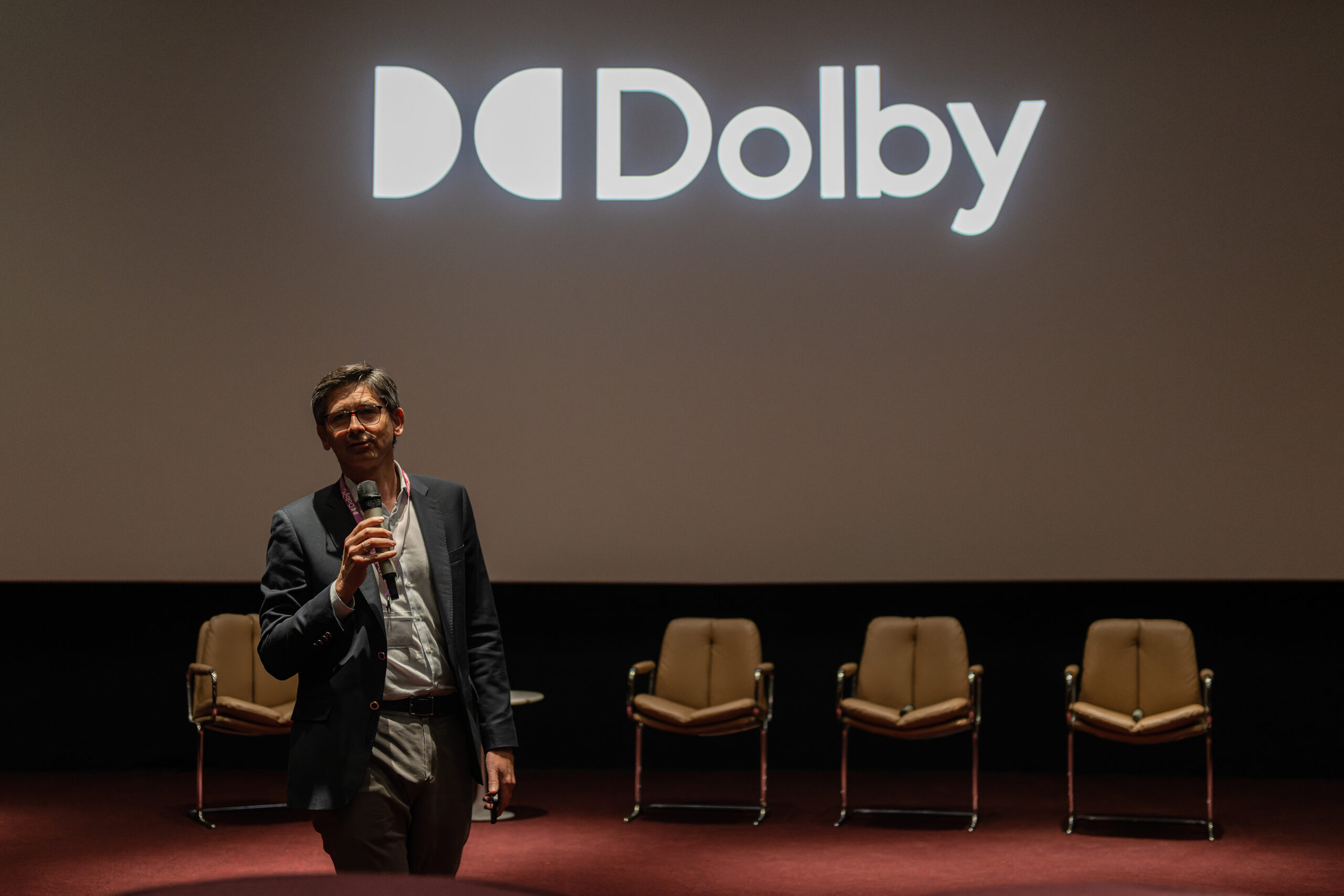
Dolby Atmos – a sound standard for the future
If there was one message Dolby wanted to instil in us during the London trip, it was that Dolby Atmos is here to stay – and it’s only growing.
Thousands of films, series and documentaries have been mixed in Atmos, and are warmly embraced by both producers and sound engineers as a format they enjoy working with creatively.
Recently, the format has also made inroads in music. Streaming service Tidal offers music in Dolby Atmos, as does Apple Music, increasingly so. But podcasts, audiobooks and “radio plays” have also become more relevant.
Audiobook service Audible (owned by Amazon) is among the latest to embrace Atmos. Some productions can be quite extensive in terms of sound, and with famous actors and artists among the narrators, they can almost sound like feature films – minus the picture!
Atmos is also used for live sports broadcasts, within English football (Champions League and Premier League) on Sky and BT, but also to other countries. We saw examples of this, using the Dolby AC-4 codec to transmit Atmos sound at low bandwidth, while making it easier for broadcasters to switch between different commentary languages.
But what exactly is Dolby Atmos?
Dolby Atmos is referred to as an object-based audio format. This means that the sound is no longer mixed for a specific number of channels or speakers, but rather transmitted with associated metadata – X/Y/Z coordinates that indicate the location of each sound effect in a three-dimensional sound image.
With Atmos, it has also become possible to place speakers in the ceiling – so-called height channels – for an even more immersive soundscape. The classic sound of a helicopter can sound far more realistic when the sound actually passes physically over our heads.
During our trip to London, we got to talk to Nick Fry (Picture Shop), the sound producer behind the award-winning F1 documentary series Drive to Survive on Netflix. He showed us how the technology makes it possible to move the sound effects in a three-dimensional space on screen, between the many Genelec speakers in the studio, and how this can then be recreated in the listener’s home.
The system offers huge creative possibilities, with producers choosing to place you in the centre of the stands as the F1 cars zip past – or in the middle of the driver’s seat if they wish!
Perhaps the best thing about Atmos is that the system is scalable. With support for up to 128 channels and 64 individual speakers, the sound mix and panning effects from the studio can be faithfully recreated in small and large spaces, from tiny “bucket rooms” to huge cinema halls with hundreds of seats. Not only that, but the metadata can also be used to create a more realistic surround effect when listening with headphones (known as Dolby Atmos binaural mix).
It is important to note that Dolby Atmos in itself does not necessarily guarantee a good sound experience. The sound is created by the artists and creative minds in the studio. What Dolby provides are the tools to programme the sound, transport the signals and recreate the sound experience in your living room.
Now, this was a Dolby event, but let’s not forget that there are competing formats, including DTS:X from Digital Theatre Systems, that can achieve similar effects.
The point is that 3D audio formats such as Dolby Atmos offer great creative possibilities, which can be recreated in the listener’s home far more accurately or better than before, with the help of positional metadata.
Given the developments in AR (Augmented Reality) and VR (Virtual Reality), we have probably only seen the beginning of what 3D audio can be used for!
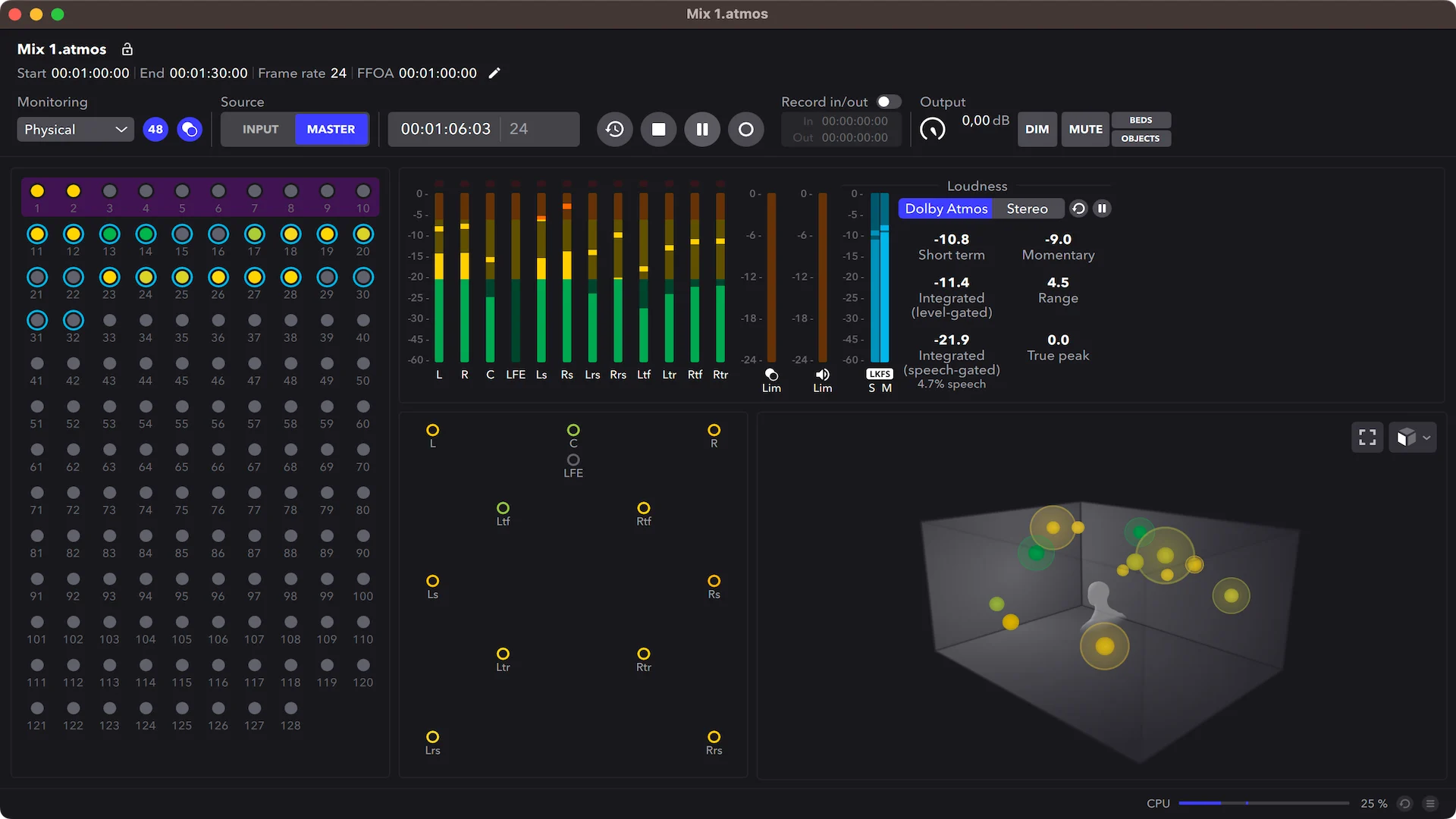
Atmos for music (Dolby Atmos Music)
In the last couple of years, Dolby Atmos has also made a strong entry into music. During our visit to London, we visited Abbey Road Studios – where a large number of high-profile music productions are now being recorded, mixed and remixed in the Dolby Atmos format.
The legendary studio opened in 1931 as the first dedicated recording studio in the world, and has spawned a number of iconic bestsellers. The cover photo for the Beatles album ‘Abbey Road’ was snapped in the footpath just outside. The film scores for Indiana Jones and Star Wars were recorded here. Recordings of world-renowned artists are still held weekly, as well as film scores and lavish gaming productions. We could swear we saw some familiar faces during lunch…
In the studios, we got to see and hear how sound engineers work when mixing an Atmos soundtrack for music, film and TV. Feature films are usually mixed in a larger studio with up to 44 active Dynaudio monitor speakers, while it’s common to do a ‘near-field remix’ with B&W speakers before release to streaming services, TV and Blu-ray.
Dolby Atmos – now also for your car
Perhaps the most exciting development is happening within Dolby Atmos for cars. Several car manufacturers, including Mercedes, Nio, Polestar and Volvo, have introduced Atmos-compatible sound systems for their cars. This comes after a long period of development by Dolby.
Andreas Ehret has been responsible for the project, and he showed us a Volvo XC60 project car, which they had modified with their own height speakers (7.1.4 setup) and associated sound processing.
When playing Atmos soundtracks in a car, it is important to not only recreate the sound from the studio, but also to be able to optimise and adapt the sound optimally for both driver and passengers. Otherwise, the sweet spot will be somewhere in the centre of the car, where the handbrake used to be!
In car audio systems, it has long been common to introduce some kind of virtual 3D surround effect – with varying degrees of success. But now that the 3D sound is already included in the Atmos-mastered recording, it’s a completely different story.
Rocket man at full blast
Inside the Volvo, we got to hear Elton John’s Rocket Man, one of the first songs to be officially remastered in Dolby Atmos format. And it sounds immediately inspiring! Elton’s vocals sound bigger up front, the chorus comes from all sides, the piano, drums and bass go deeper and fill the cabin in a completely different way – more “live” – than the traditional stereo recording, while the sound – the sound itself – is true to the original from 1972.
Some might still think that you shouldn’t tamper too much with classics like this. It was therefore just as interesting to hear new recordings such as Billie Eilish’s Oxytocin, which shows that the Atmos format has a lot to offer for music as well.
The Atmos format will play an important role in several upcoming car models, including the Mercedes EQE, Volvo EX90, Polestar 3, Nio ET7 and Lotus Eletre, so stay tuned for more sound tests in the near future!
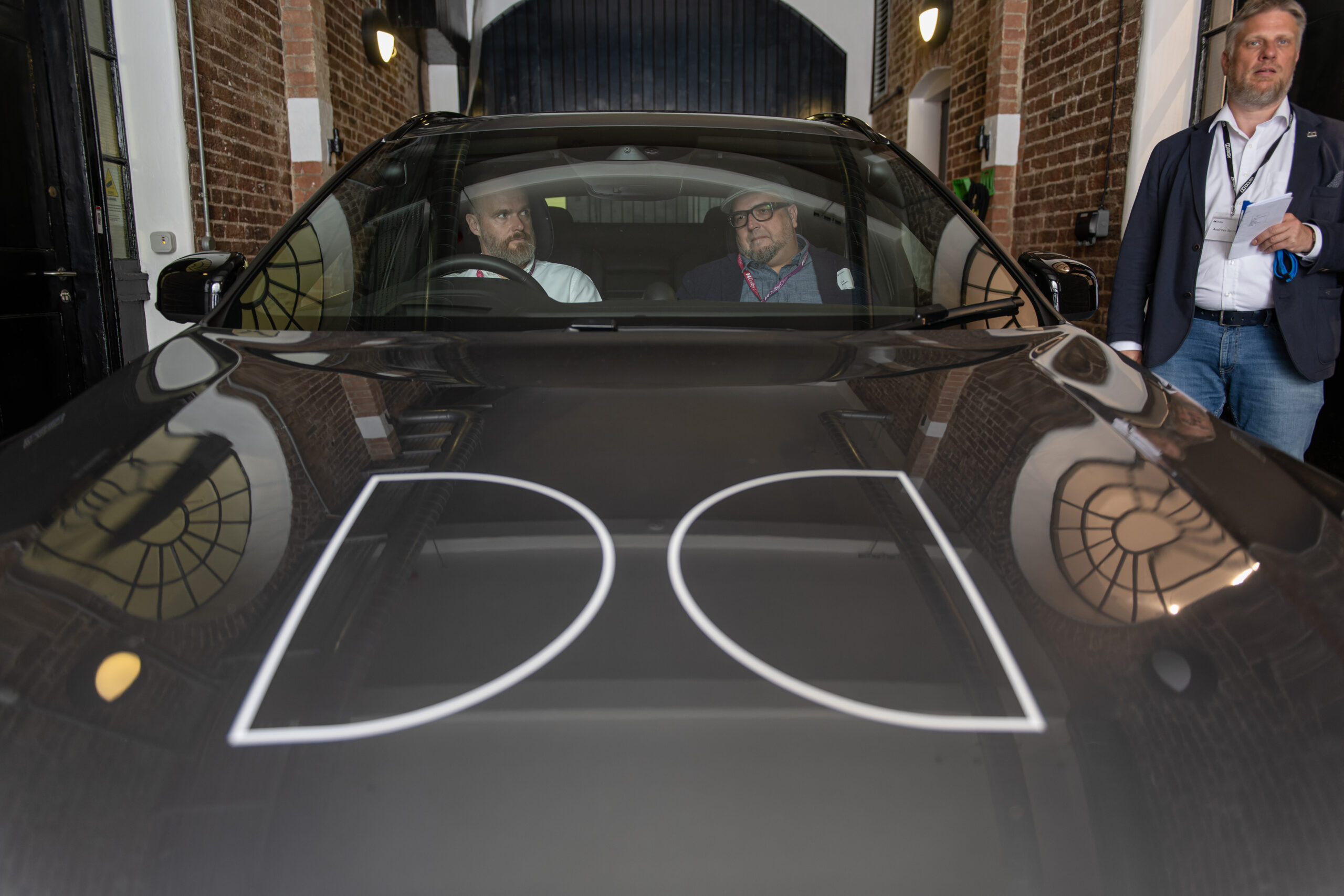
The spherical LED building is also equipped with a whopping 164,000 surround speakers. Beat that!
Dolby Cinema: Bring out the popcorn!
The coolest picture experience came when we visited the public Cinema in the Power Station at Battersea outside London. This is a luxury, Dolby Cinema-certified cinema, which means it uses a custom projector setup consisting of dual Christie 4K laser projectors. Many of the film titles shown are mastered in Dolby Vision.
We were given a short demo taken from Top Gun: Maverick, where Tom Cruise does some breakneck aerial stunts in the Mojave Desert. And without exaggeration, this is probably the most raw picture quality yours truly has ever seen on a cinema screen!
With far greater contrast and deeper black levels than you’re used to seeing from regular cinema projectors, backed up by a thunderously brutal and crystal clear sound system, this was an adrenaline-filled experience. Certainly a worthy competitor to IMAX, and while the aspect ratio (at 2.40:1) may not be as immersive as the IMAX screens (at 1.90:1), it definitely added to the flavour. It would definitely be exciting if we could see a real Dolby cinema here in the Nordics too!
